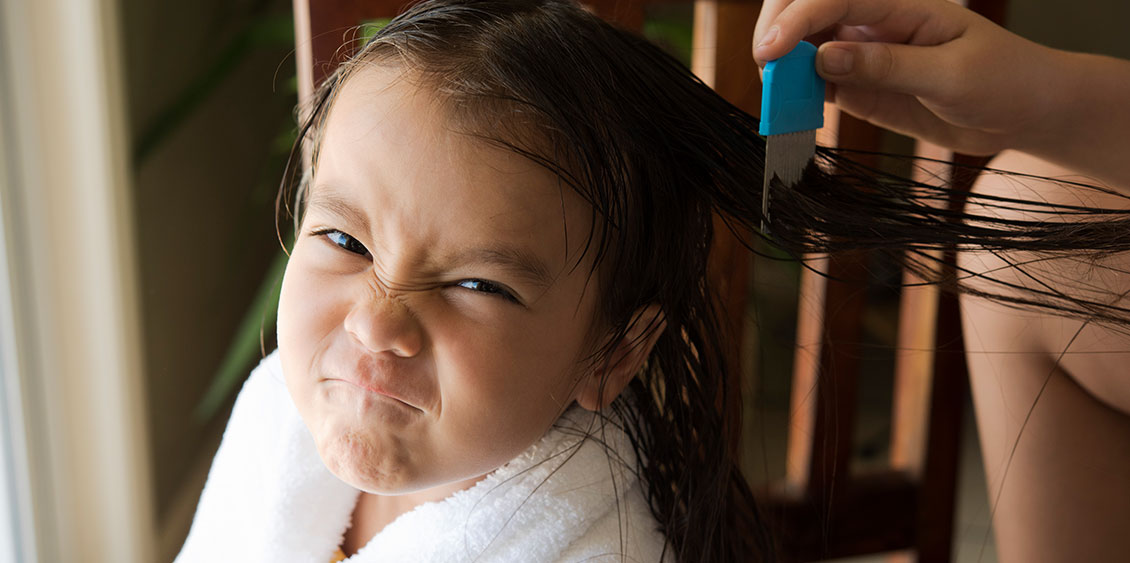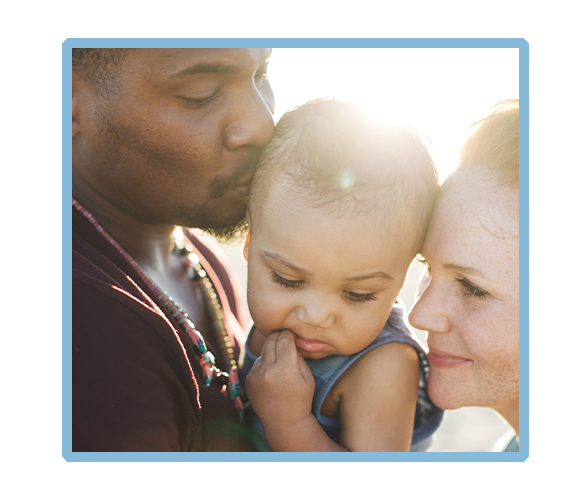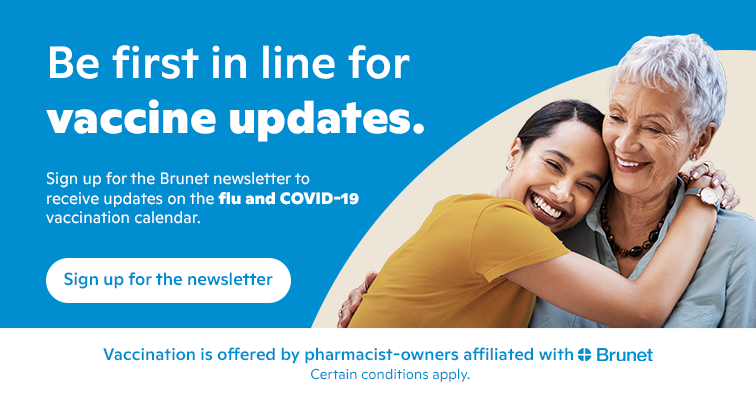Small but stubborn, head lice are common in crowded places, like schools and daycares. However, contrary to popular belief, they aren’t a sign of poor hygiene. The tiny insects are simply looking for a scalp to feed on, as they need human blood to survive. Fortunately, there are a few simple steps you can take to eliminate lice and prevent them from coming back.

What do head lice look like?
Head lice are small, grayish, wingless insects about 2 to 4 mm in length. Adult females are generally larger than males and lay up to 10 eggs (commonly called nits) a day. They can be found near the roots of the hair. Live eggs are greyish white and shiny. They stick to the hair roots and shaft and are very difficult to remove. After the eggs hatch, the empty casings turn white and may detach from the hair root.
Good to know
Contrary to popular belief, lice don’t jump or fly. They are transmitted mainly by contact (hair to hair) or by sharing objects that come in contact with the head (toques, baseball caps, scarves, etc.).
How do you get rid of lice?
If you spot live lice or nits, you need to act fast. In most cases, lice infestations can be treated by washing the hair with a lice shampoo and using a lice comb on damp hair to comb out the nits and lice (both living and dead).
Look for products that include an insecticide or a natural oil, such as lavender essential oil, that repels lice.
Tip: Always read the instructions carefully, especially before applying the product for the first time. If you’re unsure, ask your pharmacist for advice.
How can I prevent head lice?
There are a few simple steps you can take to prevent lice infestations. Encourage your child to avoid close (head-to-head) contact with others and refrain from sharing personal items such as brushes, hats, and pillowcases.
You can also try lice prevention products made with ingredients like lavender essential oil. These products do not eliminate lice, but can help keep the infestation from spreading between classmates and family members.
What keeps lice away?
Lice don’t like certain scents, such as lavender and tea tree oil. Diffusing these essential oils or using a shampoo that contains them may help keep lice at bay.
Note: No natural product is 100% effective, but when combined with regular monitoring, they can make a difference. Your pharmacist can advise you on the most effective products for your situation.
How to treat lice
- Treat the affected person immediately and check the heads of all family members.
- Wash sheets, towels, pillowcases, and hats in hot water.
- Items that cannot be washed can be isolated in an airtight plastic bag for 10 days.
- Don’t forget to notify your school or daycare center to prevent the spread of lice.
Careful monitoring over a two-week period can often prevent a new infestation.
What’s the best lice repellent?
No repellent product is 100% effective, but if you do want to try one, products containing lavender or tea tree essential oils are among the most widely used. These can come in the form of shampoo, spray, or lotion for daily application.
How to prevent lice from spreading
Lice are transmitted person-to-person through direct contact with hair. They can also be transmitted by contact with objects such as hairbrushes and pillows, though this is less common, as lice can only survive three days away from the scalp.
How to check your child’s hair for lice
The main symptom is itching of the head, neck, and ears. However, not everyone with lice experiences itching. That’s why it’s important to regularly check your children’s hair when they get home, especially at the start of the school year or daycare. You may also notice small red dots on the scalp. These are bloodstains left behind after lice feed.
To check your child’s head, you’ll need a lice comb. Follow these steps:
- If you have long hair, make sure you tie it up to avoid any contact with your child’s hair.
- Place your child’s head under a lamp: Lice shy away from light and you’ll be able to see them moving around.
- Wet the hair.
- Use the comb to divide the hair into small sections.
- Comb through each section one at a time.
- Pay particular attention to the back of the ears and the nape of the neck.
- After combing each section, check the comb for eggs or adult lice.
- Wash your hands.
It’s a good idea to check your child’s head every day if someone they know has head lice. It’s also a good idea to check your child for lice every week at the start of the school year, as a preventive measure.
What do nits (lice eggs) look like?
Nits are whitish or brownish and resemble small sesame seeds. They are glued firmly to the hair shaft. Adult lice move quickly and can be harder to spot.
Unfortunately, there is no fully effective preventive treatment against head lice. Only rapid identification and treatment can prevent lice from spreading. However, there are a few things your child can do to reduce the likelihood of getting lice.
For example:
- Tie back long hair.
- Avoid sharing personal items such as toques, scarves, and hairbrushes.
- Tuck tuques, baseball caps, and scarves into coat sleeves when not wearing them.
- Avoid head-to-head contact with others.
Treatment options
If you detect lice or nits, it’s important to apply a head lice treatment as soon as possible. There are many treatments available in pharmacies. Ask your pharmacist for help: they will be able to advise you on the treatment best suited to your needs and, in some cases, even prescribe the appropriate treatment.
Here are some tips for treating head lice:
- Examine the heads of everyone in the family.
- Treat only those who have lice or nits.
- Treat anyone with lice without delay.
- Notify the school, daycare, and anyone who has been in contact with the infested person.
- Follow the manufacturer’s instructions for the head lice treatment you are using.
- Clean personal items such as bedding, combs, hairbrushes, hats, and other accessories.
- Apply a second treatment 7 to 9 days after the first treatment (varies by product), and potentially a third treatment, depending on the product chosen.
- Use a lice comb to check the head 2, 11, and 17 days after the first application of the product, to increase the chances of success.
- Repeat the full treatment with a different product if you still find lice 17 days after the first application.
Head lice aren’t dangerous, but they’re very annoying and cause a lot of headaches. Ask your pharmacist for information for effective treatment. Remember, rapid detection and treatment are the key to getting rid of head lice.
Do you or your child have lice? Don’t delay: ask for advice from a pharmacist near you.
Other articles that might interest you
6 tips for back-to-school confidence
Last updated on September 18, 2025

